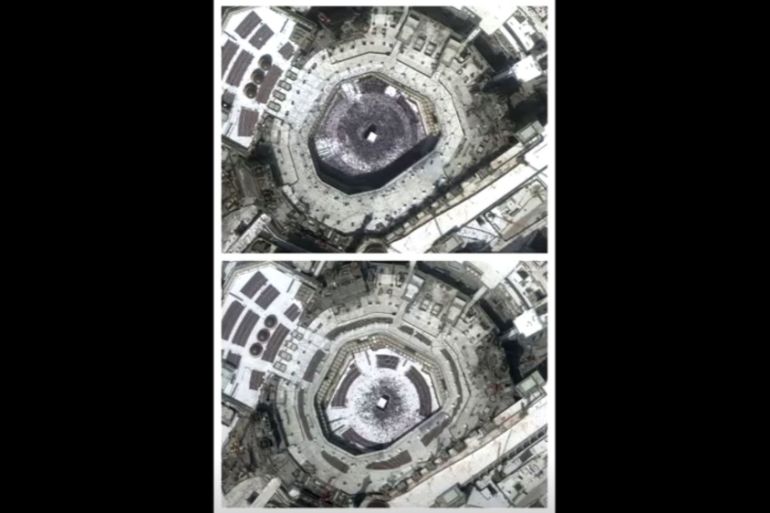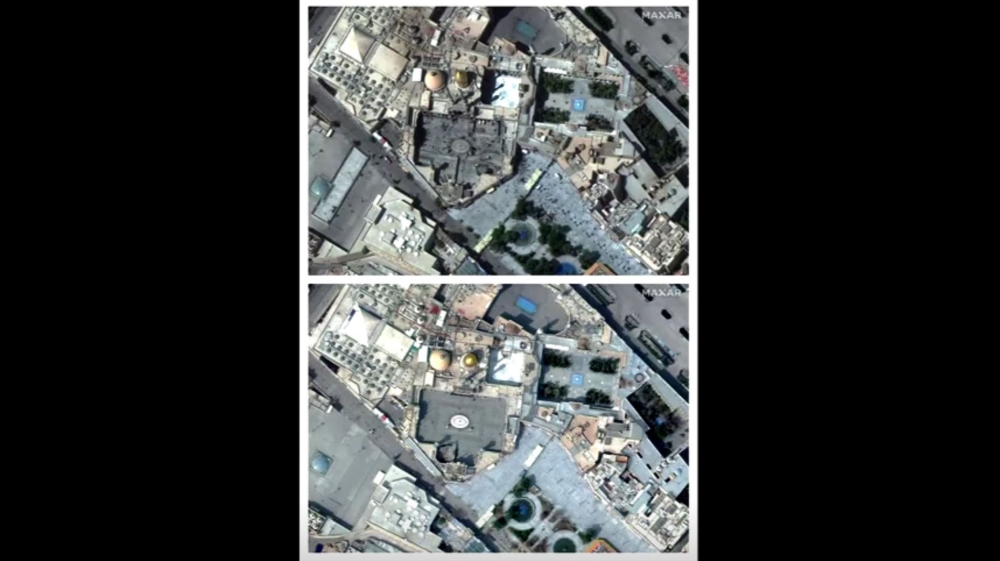Satellite images reveal emptying famed sites, from Saudi to Iran
Aerial photographs show normally bustling spots from Mecca to Beijing thinned of people as coronavirus spreads.

Empty public squares, a ghostly train station and deserted holy sites – a series of striking satellite images have revealed the impact of the coronavirus epidemic on some of the world’s busiest spaces.
The aerial photographs, released by Colorado-based space technology firm Maxar Technologies, show normally bustling spots from Mecca to Beijing thinned of people.
Keep reading
list of 3 itemsCoronavirus is changing the way Muslims worship across the world
What happens if you catch the new coronavirus?
One image shows a handful of pilgrims circling the granite Kaaba at Mecca’s Great Mosque – a sacred site usually thronged with worshippers from every corner of the Muslim world.
Saudi Arabian authorities have suspended the year-round “Umrah” pilgrimage to Islam’s holiest place, in a bid to stop the spread of the virus which has killed more than 3,000 people worldwide.
Umrah, which can be completed in a few hours, is a pilgrimage that can be undertaken at any time of year, unlike the much more intensive and time-consuming Hajj – one of the five pillars of Islam performed during a few specific days each year.
The move was in line with the “precautionary measures taken by Saudi authorities to prevent the spread of the virus” in the Gulf state, the official Saudi Press Agency said.
Last week, Saudi Arabia said it was preventing foreigners from reaching the holy city of Mecca and the Kaaba, the building at the centre of the Great Mosque. It also said travel was suspended to Prophet Muhammad’s mosque in Medina.
This year’s Hajj, which usually brings about three million people to Mecca, is expected to take place from July 28 to August 2. Authorities have not yet announced any restrictive measures; more than 60,000 people have applied to participate in this year’s event already.
An image above the Hazrat Masumeh Shrine in Qom shows one of Iran’s most hallowed places virtually empty as its famed golden dome shimmers in the sunlight.
Streets and courtyards around the shrine are similarly vacant.
Iran is struggling to contain the virus, with a rising number of cases and deaths each day. As of Friday evening, those totalled 4,744 and 124, respectively.
Friday prayers in all provincial capitals have been halted.
Photos above Wuhan, China – the epicentre of the global outbreak – show dozens of trains parked up at the city’s deserted Dongdamen Station.
With the city under lockdown and virtually cut off from the outside world since January 23, the usually bustling station has been transformed into a makeshift depot.
Elsewhere, Tiananmen square lives up to its name as the Gate of Heavenly Peace, with only a couple of dozen cars passing by and no pedestrians to be seen.
